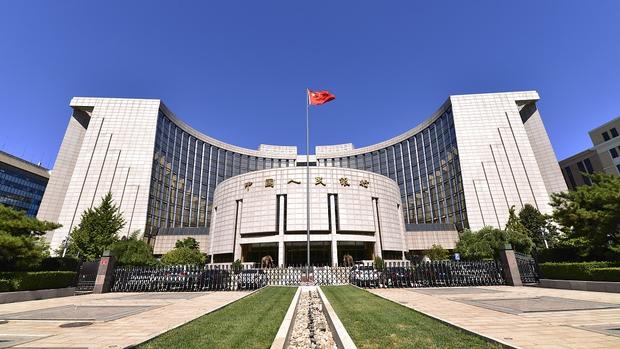 This Sept 28, 2018 photo shows the headquarters of the People's Bank of China, the central bank in Beijing. (PHOTO / VCG)
This Sept 28, 2018 photo shows the headquarters of the People's Bank of China, the central bank in Beijing. (PHOTO / VCG)
SHANGHAI - China’s central bank said it lowered interest rates on its standing lending facility (SLF) in April, catching up with similar reductions in other liquidity tools as part of Beijing’s efforts to support the coronavirus-hit economy.
In the first-quarter monetary policy report published on Sunday, the People’s Bank of China (PBOC) said it had cut SLF rates by 30 basis points on April 10, bringing borrowing costs on overnight, seven-day and one-month loans to 3.05 percent, 3.2 percent, 3.55 percent, respectively.
The PBOC said the SLF rate serves as the ceiling of its interest rate corridor and offers short-term liquidity support based on financial institutions’ demand, according to its first-quarter monetary policy report
The PBOC has been rolling out a slew of measures to backstop the economy since the coronavirus outbreak, cutting key policy rates and reducing the amount banks must hold as reserves for the dual purpose of boosting financial system liquidity and lowering financing costs.
In Sunday’s report, the PBOC said it will step up support for the economy in a move that suggested authorities were prioritizing growth and job creation as China struggles with its worst slump in decades.
ALSO READ: PBOC vows to increase counter-cyclical adjustment
Premier Li Keqiang said in a recent cabinet meeting that the government will aims to complete issuance of another 1.0 trillion yuan local government special bonds by end-May.
The central bank has lowered one-year medium-term lending facility (MLF) loans to financial institutions twice this year by a total of 30 basis points to 2.95 percent, the lowest since the liquidity tool was introduced in Sept 2014.
SLF loans have a shorter maturity and differs from the MLF, which the PBOC uses to manage longer-term liquidity in the banking system and guides the lending benchmark loan prime rate (LPR).
The PBOC said the SLF rate serves as the ceiling of its interest rate corridor and offers short-term liquidity support based on financial institutions’ demand, according to the report.
Also on Sunday, the PBOC said that despite short-term price disruptions caused by the COVID-19 epidemic, there was no foundation for persistent inflation or deflation in the country.
READ MORE: Economic rebound seen for 2nd quarter
The country's economic performance has remained generally stable, the overall supply and demand generally struck a balance, and the country does not have a foundation for sustained inflation or deflation, the PBOC said in the first-quarter monetary policy report.
Expecting factors, which include the epidemic, to continue to disrupt consumer prices from both the demand and supply sides in the short run, the central bank said it will closely monitor the situation.
It vowed to step up counter-cyclical adjustment to support the real economy, make the prudent monetary policy more flexible and appropriate, and continue to deepen market-oriented interest rate reform and reform on the yuan exchange rate formation system.


